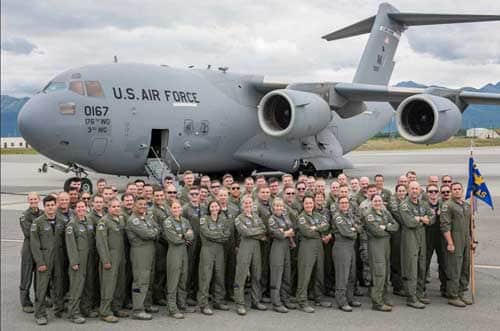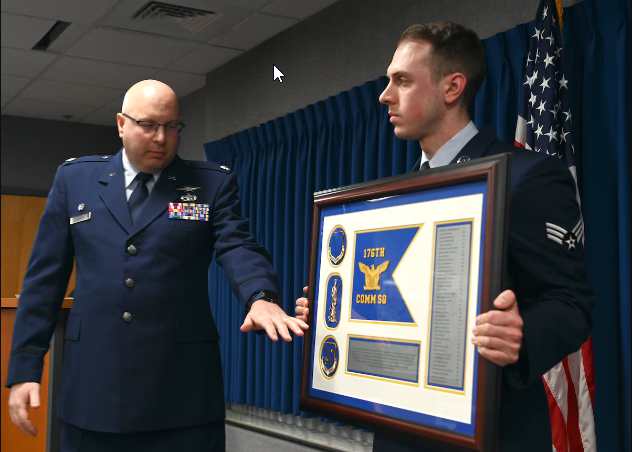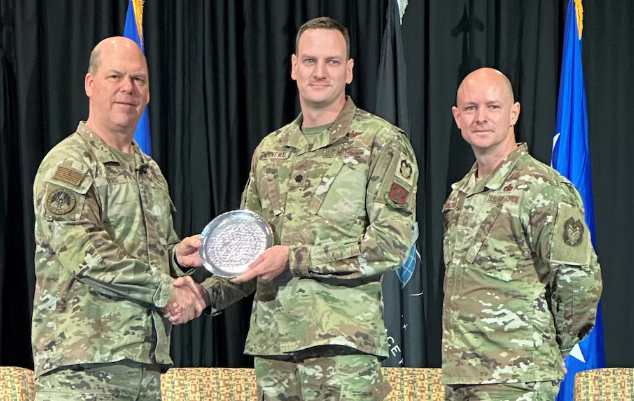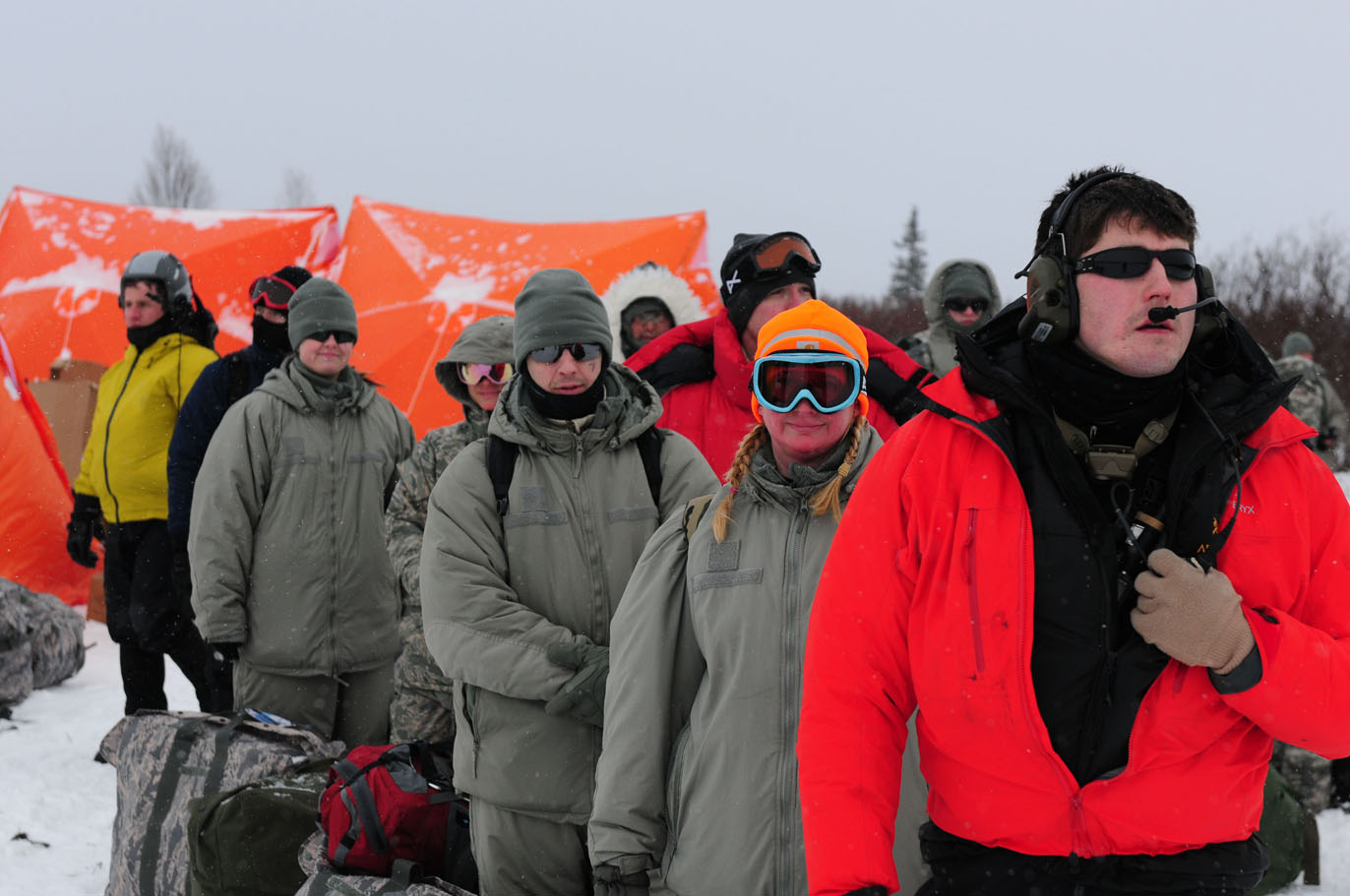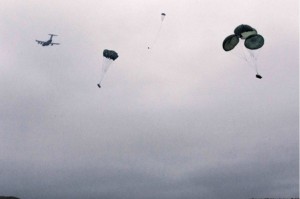
JOINT BASE ELMENDORF-RICHARDSON, Alaska — Service members from the Alaska National Guard and U.S. Army Alaska worked together to perform a sequential airborne drop of two Small Unit Support Vehicles from an Alaska Air National Guard C-17 Globemaster III onto Malamute drop zone on Joint Base Elmendorf-Richardson, Sept. 16.
The sequential drop was the first recorded airborne operation of its kind in Alaska.
The two Alaska National Guard SUSVs were rigged by USARAK’s 4th Quarter Master Company here, and air dropped by Alaska Air National Guardsmen from the 176th Wing’s 249th Airlift Squadron as NATO participants observed the historic drop.
The SUSV, also referred to as the Bandvagn 206, was developed by Hagglunds for the Swedish Army. They are fully-tracked all-terrain, amphibious vehicles designed to support platoon-sized units in arctic and mountainous conditions.
“The US Army has the aerial delivery lead in all types of situations: Training, war, and humanitarian aid,” said Chief Warrant Officer 3 Ismael Ramosbarbosa, with the 4th QM Co. “The 4th Quarter Master Company is the theater Aerial Delivery Support Company. As such, it is our duty to ensure all airborne operations and aerial delivery operations are accomplished on time and without any incidents.”
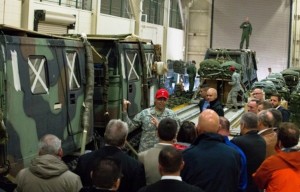
During the rigging process, the Soldiers followed precise safety procedures focusing on proper parachutes, load configuration and release sequence in preparation for the drop. Each rigged SUSV load weighed approximately 17,000 pounds. At nearly 35,000 pounds of cargo dropping from the air, safety measures are of the utmost importance.
“We rigged all approved load configurations in accordance with their respective training circular and field manual,” explained Ramosbarbosa. “Our riggers are proficient in rigging several loads at a time.”
Despite heavy rainfall, observers watched as each SUSV, requiring four 100-foot-diameter cargo parachutes weighing 250 pounds each, was safely carried to the ground.
“With USARAK, Alaska National Guard, and NATO participants watching, the 4th Quarter Master Company was honored to be able to share our aerial delivery expertise with our allied forces,” added Ramosbarbosa.
A user group supporting the NATO Support and Procurement Agency witnessed the momentous drop during its semi-annual conference hosted by the Alaska National Guard.
“We have never seen this before,” declared Federal Defense Forces of Germany Lt. Col. Andreas Prengel, chairman of the BV206 user group. “I wouldn’t believe that it was possible to air drop a vehicle so smoothly.”
The BV206 user group meets semi-annually to exchange information about their delegation’s respective vehicle fleets. This is the first time the U.S. has hosted the summit since the group’s establishment in 2005.
“The purpose of the meeting is to set up and maintain common logistics with focus on spare parts and spare parts contracts,” explained Prengel. “The NSPA as an official entity drafts contracts within the industry with very good conditions in terms of pricing and lead times. All the nations working together have a larger need and requirement for spare parts than any single nation.”
“Participation of delegations was comprised of the Netherlands, Germany, Norway, Sweden, Finland and the U.S.,” added Prengel. “There are also a couple of other European nations missing that normally participate, to include Spain, Italy, Lithuania, Estonia, the United Kingdom and Denmark.”
Representatives from several organizations including the National Guard Bureau, USARAK, Red River Army Depot, and other foreign nations attended the summit to discuss sustainment of the SUSV platform and learn about best practices.
Apart from the regular meeting agenda and SUSV airborne drop, the user group was briefed by the Red River Army Depot, a military facility that maintains and repairs the Army’s tactical wheeled vehicle fleet, on setting up a production line for an entire refurbishment of the SUSV.
Alaska Army National Guardsman Sgt. Maj. Charles Hooper, 38th Troop Command operations sergeant major, explained that the Alaska National Guard is hoping to get a subcontract to rebuild the vehicles here.
“This user group meeting not only provided the latest and greatest information from other delegations and nations, but it will help us with our own rebuild program if it is approved,” explained Hooper.
“This was also a great opportunity for our National Guardsmen to witness and assist the 4th Quartermaster Company with rigging operations,” added Hooper. “Everyone was able to watch the operation from the top to bottom and it successfully ended with the SUSVs driving off the drop zone.”
The Alaska National Guard currently has 56 SUSVs and are only joined by four other states that operate the all-terrain vehicle which include the Colorado, Main, Minnesota and Vermont National Guards.
“Apart from the weather, all delegations were very happy to be here,” added Prengel. “The U.S. were exceptionally friendly hosts.”
Alaska National Guardsmen are scheduled to attend the next user group meeting that will take place in the Netherlands in March 2016.
[content id=”18649″]


